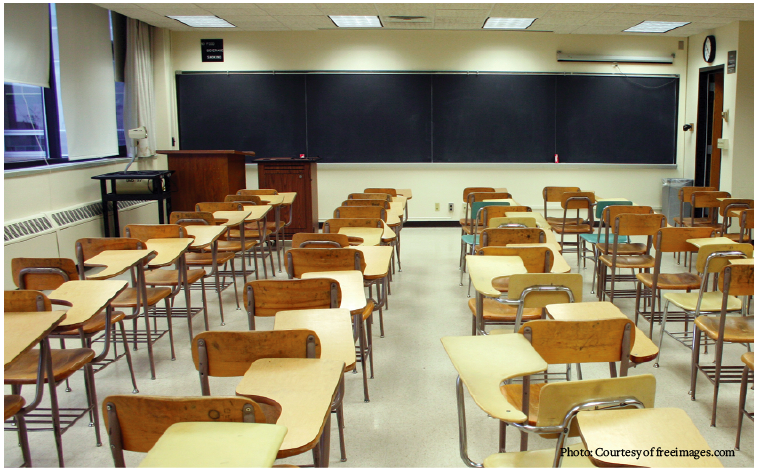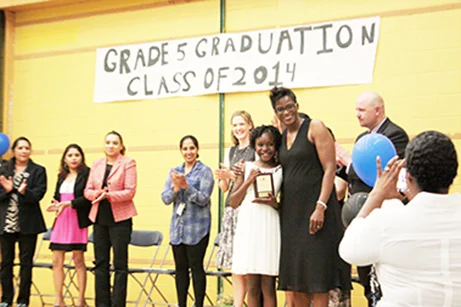By Dani Kwan-Lafond
 The notion of ‘youth helping youth’ is easier said than done. While many young people aspire to make their communities better places, few have the time, energy or organizational skills to make it happen. The Downsview community is home to several successful initiatives that are making real positive differences in people’s lives. The Downsview Advocate will feature one of these per month, beginning with M.A.T.A. (Mentoring Arts Tutoring Athletics), a youth organization that partners students at CW Jefferys with former students who are now attending nearby York University“I made it to university, but I could see that many of my peers were struggling, and I wanted to help. My first year in university was certainly difficult and I thought about how important it is for youth to not only get into post-secondary, but also to have resources and support once they achieve that goal. This is what encouraged me to start M.A.T.A. In order for an organization to be truly democratic and comprise of youth voice, I think it is important for people to be able to step away and let others step in. I am glad that Troy Budhu and Monica Patel, whom are C.W.J. and MATA graduates are now running the program in a remarkable way.” Janelle Brady, Founder, M.A.T.A.M.A.T.A.’s founder, Janelle Brady, is a busy Master’s student in Education at York University. On any given day, she can be found rushing around the neighbourhood to meet with community members, answering the phones at the local city Councillor’s office, doing community research, or attending classes at York University. She is articulate, friendly, and serious about making post-secondary schooling less intimidating and more accessible to youth. Full disclosure: she is also the brains behind the Downsview Advocate, another initiative she’s recently started to bring more voices to the table on community issues.M.A.T.A. was founded in 2010 and its core activities consist of after-school tutoring programs, and a mentorship program where high school students are paired with York University students, in order to get an insider’s view on what university is like.“The MATA program has been really wonderful in terms of mentoring me and helping me decide for post-secondary. What I love most about the program are the wonderful mentors who are always free to talk not just about school, but also about more personal things that relate to teen life. The mentors are definitely what make this program”. Nuradin, M.
The notion of ‘youth helping youth’ is easier said than done. While many young people aspire to make their communities better places, few have the time, energy or organizational skills to make it happen. The Downsview community is home to several successful initiatives that are making real positive differences in people’s lives. The Downsview Advocate will feature one of these per month, beginning with M.A.T.A. (Mentoring Arts Tutoring Athletics), a youth organization that partners students at CW Jefferys with former students who are now attending nearby York University“I made it to university, but I could see that many of my peers were struggling, and I wanted to help. My first year in university was certainly difficult and I thought about how important it is for youth to not only get into post-secondary, but also to have resources and support once they achieve that goal. This is what encouraged me to start M.A.T.A. In order for an organization to be truly democratic and comprise of youth voice, I think it is important for people to be able to step away and let others step in. I am glad that Troy Budhu and Monica Patel, whom are C.W.J. and MATA graduates are now running the program in a remarkable way.” Janelle Brady, Founder, M.A.T.A.M.A.T.A.’s founder, Janelle Brady, is a busy Master’s student in Education at York University. On any given day, she can be found rushing around the neighbourhood to meet with community members, answering the phones at the local city Councillor’s office, doing community research, or attending classes at York University. She is articulate, friendly, and serious about making post-secondary schooling less intimidating and more accessible to youth. Full disclosure: she is also the brains behind the Downsview Advocate, another initiative she’s recently started to bring more voices to the table on community issues.M.A.T.A. was founded in 2010 and its core activities consist of after-school tutoring programs, and a mentorship program where high school students are paired with York University students, in order to get an insider’s view on what university is like.“The MATA program has been really wonderful in terms of mentoring me and helping me decide for post-secondary. What I love most about the program are the wonderful mentors who are always free to talk not just about school, but also about more personal things that relate to teen life. The mentors are definitely what make this program”. Nuradin, M. Mentors and students meet up monthly for social events that often double as community volunteering events: visiting a soup kitchen or home for the elderly to help out, or joining with other community groups to help at seasonal events. The group also gets together for recreational activities, so that mentors and students can get to know each other.Many of the students involved have limited financial means, and limited knowledge of what’s out there in the city to do.MATA connects them with exemplary mentors, and also builds a sense of belonging in the community when they take part in larger events together.All the participants, mentors and youth alike, become better connected to each other and to neighbourhood groups who have similar goals of improving community life.Next month, several youth, mentors and staff are joining a partner organization on a trip to one of Tim Horton’s camps, for a free weekend of bonding, outdoor education, and lots of fun!The organization has also set up an ongoing scholarship fund at York for new incoming students. For more information about M.A.T.A.’s activities or to get involved, go to http://matayouth.com/
Mentors and students meet up monthly for social events that often double as community volunteering events: visiting a soup kitchen or home for the elderly to help out, or joining with other community groups to help at seasonal events. The group also gets together for recreational activities, so that mentors and students can get to know each other.Many of the students involved have limited financial means, and limited knowledge of what’s out there in the city to do.MATA connects them with exemplary mentors, and also builds a sense of belonging in the community when they take part in larger events together.All the participants, mentors and youth alike, become better connected to each other and to neighbourhood groups who have similar goals of improving community life.Next month, several youth, mentors and staff are joining a partner organization on a trip to one of Tim Horton’s camps, for a free weekend of bonding, outdoor education, and lots of fun!The organization has also set up an ongoing scholarship fund at York for new incoming students. For more information about M.A.T.A.’s activities or to get involved, go to http://matayouth.com/














